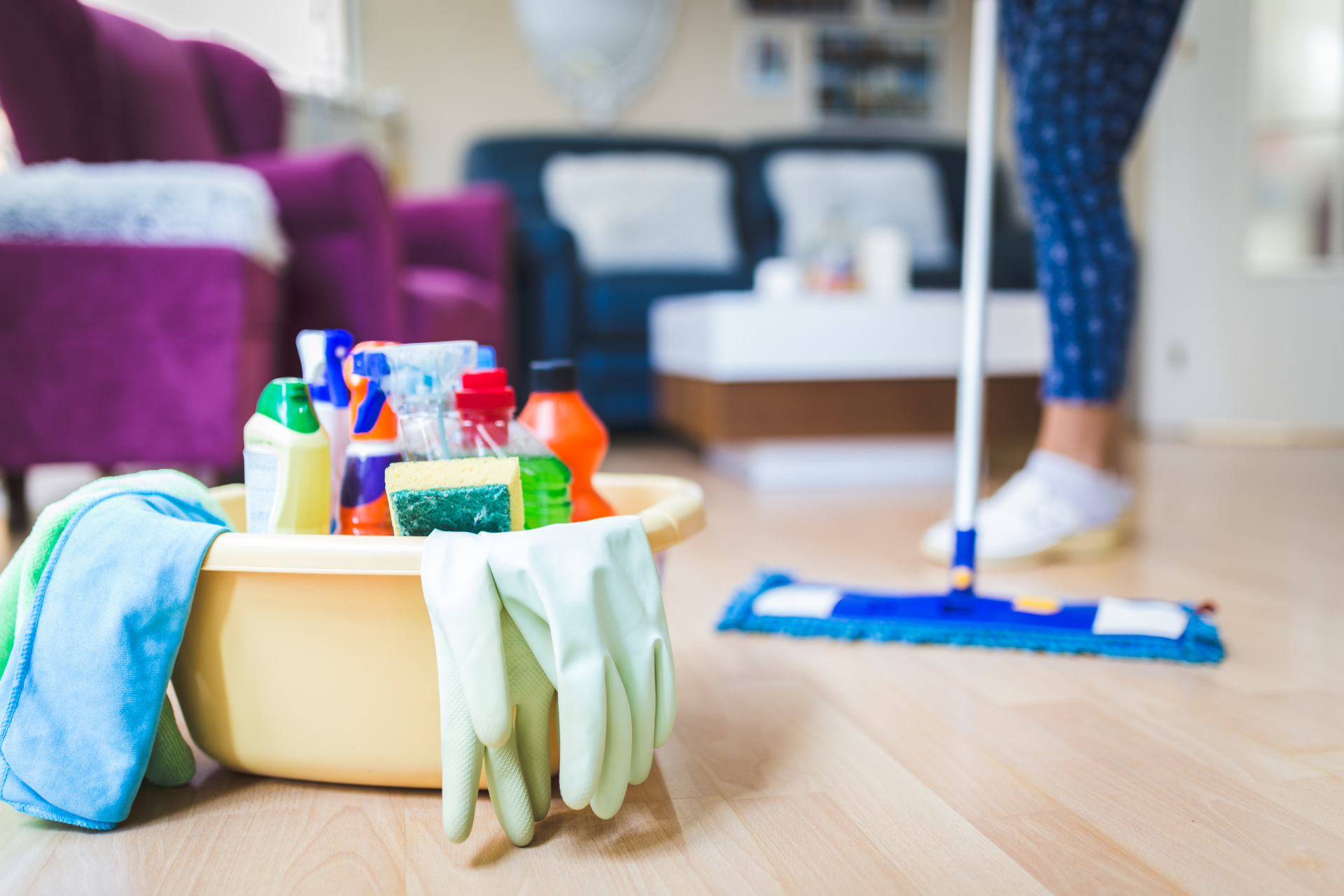Is Clay Soil Good For Plant Development? The Info
Tony O’Neill, skilled gardener and best-selling creator of the well-known “Simplify Vegetable Gardening,” “Composting Masterclass,” and “Your First Vegetable Backyard,” combines lifelong ardour and skilled information to simplify gardening. His mission? Serving to you domesticate a thriving backyard. Extra on Tony O’Neill
{“statusCode”:401,”message”:”License key lacking”}
Clay soil has a number of advantages, together with excessive carbon content material and improved cation trade capability (CEC), enabling it to carry vitamins higher than different soils. Sadly, the identical CEC additionally binds water, a root well being problem. Nonetheless, heavy clay soil might be remedied, and right here’s how.
Soil Construction
Gardening soil construction is a proportional mixture of clay, sand, or silt. Clay soil has little sand and silt content material, whereas loam soil is a wholesome mix of all three. Technically, the completely different proportional mixtures of those three substances enable us to outline soil in certainly one of 14 classes.
Clay particles are tremendous positive, and sand particles are the biggest. Comparatively, if a sand particle is a baseball, silt is the scale of a pea, and a clay particle is the scale of a pinhead. Soil texture influences its response to water, air, compaction, and diet. Under are the traits of the completely different base textures:


| Attribute | Clay Soil | Silty Soil | Sandy soil |
|---|---|---|---|
| Looseness | Poor | Honest | Good |
| Discipline Capability & Saturation Porosity | Poor | Honest | Good |
| Water Administration | Poor Drainage | Honest | Poor water retention |
| Clod Forming Inclination | Good | Honest | Poor |
| Workability | Poor | Honest | Poor |
| Fertility | Honest to Good | Honest | Poor |
| CationtoExchange Capability (CEC) | Good | Poor | Poor |
A phrase of warning! Mixing sand and clay doesn’t enhance your clay’s drainage potential. Contemplating the illustration above, thousands and thousands of pinheads can match across the baseball. Subsequently, including sand has little impact on aeration or water drainage ranges. One of the best ways to aerate and improve clay drainage is by including compost.
Issues With Clay Soils for Plant Development?
Clay soils have the benefit of holding a number of vitamins and micronutrients. Nonetheless, heavy clay soils might be difficult and trigger crops to underperform. The primary challenges are:
- Clay soil compaction
- Clay particles are so minute they restrict soil air motion
- Clay soils maintain an excessive amount of water, inflicting root rot
Clay Soil Compaction
Clay soil contains many microscopic particles that mix and compact, limiting water penetration and drainage. After dry climate, clay is gradual to rehydrate and, as soon as moist, gradual to empty.
Dry clay soils are tough to work with and develop into so compacted that getting ready a backyard mattress turns into difficult. On the opposite facet of the spectrum, moist clay is so compact that it’s a lot heavier than completely different soil, making it equally tough to work with.
There are answers, and we’ll discover them later on this article smaller the soil particles, the extra compaction that happens, though this soil kind. Over time these particles get smaller and smaller, which makes the soil even worse. It may be seen in the course of the summer time when your soil goes as arduous as concrete and cracks.


Clay Soil Air Motion
Leaf chlorosis (yellowing) is especially attributable to plant roots which can be suffocating or drowning. When the soil pores are too small or stuffed with water, the soil can not lure any air, and roots can not breathe. As a result of clay soil particles are microscopically small, they go away no area for air.
Evaluate this with sandy soil the place the pores are massive. Nonetheless, sandy soils can have poor construction and due to this fact wants aeration to maintain channels open and air within the profile. Silt soils develop design however usually weakly, being vulnerable to compaction and therefore require aeration and decompaction.
The very best soils for construction might be clays, however their drainage charges might be meager, particularly in moist and compact situations. Sand additionally doesn’t maintain air properly, and water flows by means of as a result of the natural matter is so low. Loamy soil is good for many crops, offering root aeration, water retention, and drainage to rising crops.
Soil microorganisms additionally want air to breathe, and their presence boosts soil’s porosity and mixture formation. No matter your soil profile, introducing microorganisms will assist enhance drainage, pore formation, and strengthen mixture formation – all important for wholesome crops.
Clay Soil Water Retention
A soil’s capability to carry water is a product of cation trade capability (CEC), which is affected by natural materials content material. Sand, on the one facet of the spectrum, drains 20 instances sooner than clay soil, primarily as a result of the CEC is low. Clay has a CEC about ten instances stronger than sand, so clay soil retains water properly.
When massive portions of water are utilized to clay soil, the soil turns into sticky, additional stopping air penetration. The bottom turns into arduous when it releases this soil or dries out, like concrete and cracks.
The three causes above are the main causes of why clay soils are unsuitable for plant development. Nonetheless, there’s a caveat to this; we are going to cowl that as we proceed. Beginning with amendments
Soil Amendments for Clay Soil
As we noticed, loam soils mix clay, silt, and sand. Can we add silt and sand to clay to create our loamy soil? Sadly not. Loam is a pure mix formed over millennia. One of the best ways of enhancing clay soil is so as to add natural matter yearly, ideally in thick layers.
The best method of enhancing clay soil is by including compost, a mix of natural supplies (supplies that comprise carbon) and microorganisms. The natural supplies increase aeration, and the microorganisms enhance the supply of plant vitamins.
First, begin amending the soil to enhance water, air, and compaction. You will need to notice that this isn’t a fast course of. Primarily we’re terraforming our little part of earth, which takes time. Including wooden chips might help, however with out oxygen, they could take years to decay.
Fairly than including wooden chips and grass clippings to enhance clay soils, use these to make compost and add it with its microorganisms to enhance clay soil.
Including natural matter to clay soils is an ideal apply as this can loosen up the construction and enhance air circulation and water retention.
What can we add to enhance clay soil for plant development?
One can add many alternative natural matter sources to enhance clay soils. The next record will not be exhaustive however is the primary one that’s available to most gardeners.
- Farmyard manure
- Cowl crops (Inexperienced Manure)
- Natural Matter
- Leaf Mould
Farmyard Manure
Farmyard manure covers all vegetarian animals comparable to cows, horses, sheep, rabbits, poultry, alpaca, and even pig can all be used to enhance soil high quality. It’s important to notice. You shouldn’t add meat-eating animals comparable to canine and cat feces; these comprise dangerous micro organism and pathogens.
It provides natural matter that helps to interrupt down clay compaction, maintain water, and create air pockets inside your clay soils. It gives meals for soil life. In flip, it feeds the soil, including extra natural matter as they go away feces behind and their little our bodies as they die.
Cowl Crops
Cowl crops are crops grown to guard the soil floor when it’s naked or dormant. It gives meals for backyard soil life and provides nitrogen to the soil; some are even biofumigant. These crops can also add tons of natural matter to the backyard soil.
It’s often accomplished by chopping down and incorporating the crops into the soil. If you like no-dig or no-till gardening, chopping and leaving on the floor till the soil life, comparable to worms, take it down and incorporate it in your behalf.
Many alternative cowl crops can be utilized for this. It deserves a put up of its personal. Fortunate for you, I’ve already written that put up, and in the event you want to know extra about this intimately, click on right here to be taken to that put up.
Compost
This is without doubt one of the hottest substances to enhance clay soil for plant development. It has the identical advantages as farmyard manure, however you can also make this from residence backyard waste. Add this annually and permit the worms to take it down or incorporate it into the soil.
Older gardeners will dig out a planting gap two spits deep (the depth of two spades), add copious quantities of compost and backfill the soil on prime. It’s okay in the event you favor to dig, however in case you are like me, who likes to disturb the soil as little as attainable, it’s higher so as to add a layer round 2-4 inches above the soil.
Whereas making compost can appear daunting, mastering the talent is the shortest route to creating wealthy soil and productive backyard beds. I’ve a really informative weblog put up right here that may present you precisely the way to get dependable and the very best quality compost on your backyard. Alternatively, watch the video beneath.
Leaf Mould
Leaf mildew is a superb solution to incorporate natural matter into the backyard for soil enchancment. Sadly, you can’t purchase this in a backyard middle. You must make it your self. Why is it so good? It might probably maintain huge quantities of water, is gentle, and permits air motion.
Have you ever ever walked in a forest or wooded space? The bottom will really feel comfortable, like a sponge below your toes. These are decomposed leaves that maintain vitamins, water, and air. A bonus is that Leaf mildew is incredible at controlling weeds by blocking out the sunshine.
Soil life loves leaf mildew, however leaf mildew will even convey fungal spores to your backyard; these develop underground, creating tiny tunnels because the roots penetrate new areas. These tunnels carry air by means of the soil. The video beneath will present you the way to make your leaf mildew at residence.
Utilizing the 4 substances above, you’ll make the clay soil excellent for plant development, however it is very important notice that this can be a long-term mission. It is not going to occur in a single day and should take a number of years of purposes to get the clay soil right into a ok form for good plant development.
Different merchandise so as to add to clay soil to enhance plant development?
As mentioned, clay soils are filled with vitamins. It’s the one benefit of clay soils, however one product referred to as gypsum might be added to your clay soil to assist plant development.
Gypsum is calcium sulfate and a liming agent that may break up the minerals and particles of the clay soil, stopping them from sticking collectively. Gardeners use this product, however it doesn’t get spoken about within the textual content for some cause.
Is Clay Soil Acidic or Alkaline?
Lots of people suppose that clay soils are impartial. Nonetheless, clay soils are often extra alkaline, though some crops, comparable to hostas, develop properly in clay soils. Most will battle to develop in unamended clay soils.
Although crops will develop, their development in unamended soil won’t ever attain their full potential and will present indicators of sickness, comparable to yellowing leaves.


Conclusion
Though clay soils have points with plant development, It’s not a misplaced trigger. You’ll be able to vastly enhance the air, water, and compaction skills by amending the soil, making clay the excellent soil for plant development.
Clay soil is nutrient-rich and appropriate for a lot of crops. As soon as we’ve accomplished the work and added the natural matter, we may have good soil for which many gardeners would die.
I hope you loved this weblog put up about clay soil. I belief it answered your query completely. If this pursuits you, why not take into account subscribing to the weblog so that you don’t miss future content material?



















